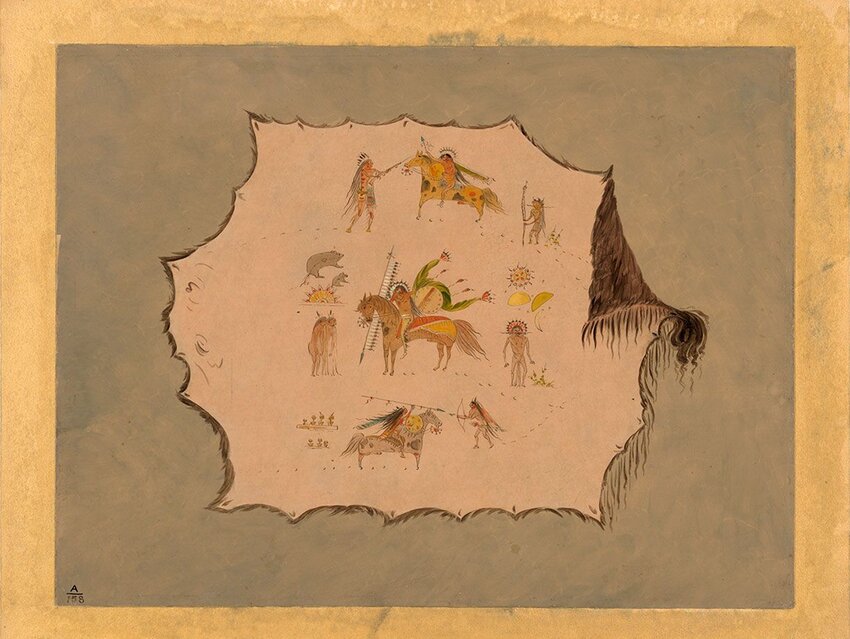“Bohemian Rhapsody” is perhaps the best-known Queen song of all time. It’s also arguably the most difficult to sing – or even attempt – for almost anyone. Now imagine doing it in a nearly extinct language.
That’s exactly what a group of students from Pawnee High School in Oklahoma did for the 2021 Oklahoma Native American Youth Language Fair (they took first place). Pawnee, considered a critically endangered Native American dialect, only has around 10 native speakers of the traditional language. The Pawnee dialect has nine consonants and eight vowels, and each Pawnee word has 10 syllables, making the students’ vocal achievement even more impressive.
Pawnee was one of more than 300 indigenous languages originally spoken in the land now known as the United States. But as American settlers expanded west in the 1860s through the early 20th century, many of these native languages started to die out, often as a result of targeted erasure and forced assimilation efforts. Only about 175 languages have survived, and in most cases, only aging tribal elders are left to speak the language. The non-profit Indigenous Language Institute predicts that no more than 20 original Native American languages will still be spoken in 2050.
Cheyenne, Cherokee, Chickasaw, Chinook, Comanche, Creek, Hopi, Kiowa Apache, Mohave, and Oneida are just some of the severely and critically endangered languages in the United States alone. Younger generations of Native peoples are working to reclaim the languages, using tactics such as immersion classes, dictionaries, recordings, social media, apps and, even classic rock songs. Some tribes, such as Chickasaw, Navajo, and Mohawk, have partnered with the popular language-learning software Rosetta Stone to create lessons in their native language.
Languages disappearing isn’t a phenomenon restricted to the United States, however. The United Nations Educational, Scientific and Cultural Organization (UNESCO) monitors endangered languages around the world, classifying them into categories from “vulnerable” (restricted to home-use only) to “extinct” (no speakers left).
Here’s a look at some of the world’s most rare and endangered languages according to UNESCO and the Endangered Languages Project (ELP).
Ainu – Japan
The Ainu people are a native group in Japan, and the earliest settlers of the island of Hokkaido. As more people immigrated from the Japanese mainland to the island, forced assimilation practically erased the language and culture of the Ainu people. Only about 10 native speakers of the Ainu language remain, all of whom are elderly. In 2019, however, the Ainu were recognized as an official indigenous people of Japan, and renewed efforts to preserve their culture and language have been adopted. ELP does reference many people being heritage learners of the language, meaning they have studied the language and gained proficiency in it. But that knowledge may not be enough to sustain the use of a language when all of the inherently fluent speakers are gone.
Njerep – Nigeria
There are four people in Nigeria who still speak Njerep, one of several languages spoken by the Mambilla people, however the language is already extinct in neighboring Cameroon. The youngest person speaking the language was born in the 1940s, and anthropologists believe it does not have a chance of survival.
Kawishana - Brazil
Kawishana or Kaixana was once a very popular language in Brazil. A member of the Arawakan family of languages, Kaixana was spoken primarily along the shores of the Japura River by indigenous villagers. Today, however, there is only one person who is documented as speaking the language, leaving it critically endangered.
Paakantyi – Australia
An estimated 24 people still speak this language of the Aborigines of Australia. Spoken along the Darling River in New South Wales, Paakantyi is named after the native name for the river, “Paaka.” Some schools in Australia are working to reintroduce the Paakantyi language to students.
Liki – Indonesia
Liki, which is also known as Moar, was once a very popular language used by indigenous church officials in the Papua region of Indonesia. There are about 11 people who live on the islands off the coast of Sarmi Kecamatan, Jayapura Kabupaten, and Sarmi who still speak this language of mixed origin.
Sarsi - Canada
Sarsi, or Sarcee, is spoken by the Tsuu T’ina tribe located in Calgary, Canada. It is an oral language with no evidence of a writing system, and written records about the language are not available. Sarsi is related to Navajo, the language spoken by the tribe of the same name in the southern part of the United States. Around 170 people still spoke the language as of the 2010 census.
Chamicuro – Peru
Chamicuro, also known as Chamicura or Chamicolo, is a traditional language in Peru with only two known speakers today. While Spanish has taken over the region as its primary language, previous speakers of Chamicuro created a dictionary, leaving written documentation for the language.
Dumi – Nepal
Only seven people speak the Dumi language, which is from the Khotang District in Nepal. A Kiranti language, Dumi is a complex indigenous language spoken primarily by indigenous native group of Nepal. A dictionary and other written books exist to show the grammar and syntax of the language.
Featured image credit: Heritage Images/ Contributor/ Getty Images

